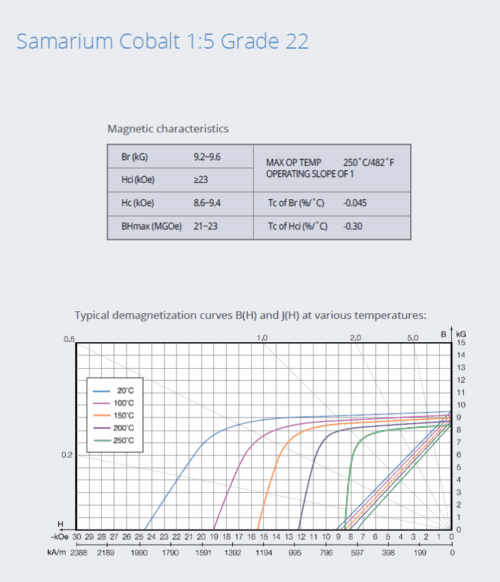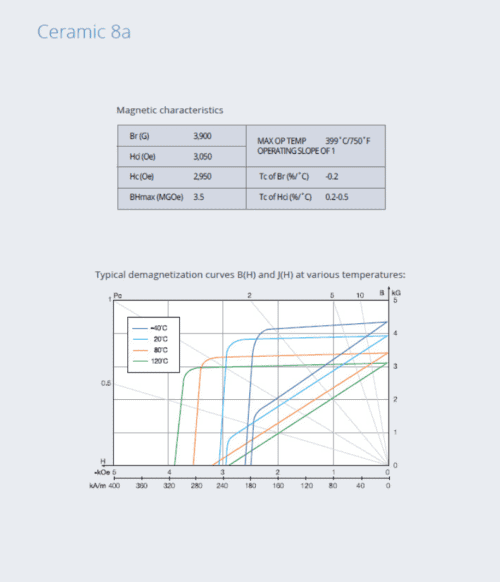Motors
High-Performance Magnets for Motors, Generators, and Actuators

What are Motor Applications?
Adams Magnetic Products provides advanced magnet solutions for motors, generators, and actuators, using rare earth magnets (Samarium Cobalt and Neodymium) and ferrite (ceramic) magnets. Rare earth magnets, being two to three times stronger than ferrite magnets, deliver superior performance in smaller, lighter motors, making them ideal for high-performance applications. Samarium Cobalt magnets are optimal for high-temperature applications due to their exceptional temperature resistance and corrosion resistance, while Neodymium magnets are favored for their high magnetic strength in electric vehicle motors. Ferrite magnets, known for their cost-effectiveness and excellent corrosion resistance, are widely used in DC electric motors.
Magnet Advantages
Samarium Cobalt
Samarium Cobalt (SmCo) magnets are optimal for high temperature motor applications due to their high magnetic strength, exceptional temperature resistance, and reliable performance without oxidation protection.
Corrosion resistance
SmCo magnets offer outstanding corrosion resistance (neodymium magnets do not). Plating or surface coatings are not necessary for most applications, making them advantageous for medical applications as well.
Temperature stability
A Samarium Cobalt magnet can withstand higher temperatures than a Neodymium magnet. The maximum operating temperatures for Samarium Cobalt magnets are between 250 and 550 °C; Curie temperatures range from 700 to 800 °C.
Neodymium
The decision between Samarium Cobalt or Neodymium as a vehicle magnet is usually based on either operating temperature and/or corrosion resistance.
Corrosion
Neodymium magnets are vulnerable to corrosion, especially along grain boundaries of a sintered magnet. This type of corrosion can cause serious deterioration, including crumbling of a magnet into a powder of small magnetic particles. This vulnerability is addressed by adding a protective coating to prevent exposure to the atmosphere. Nickel plating or two-layered copper-nickel plating are the standard methods, although plating with other metals or polymer and lacquer protective coatings are also available.
Operating temperature
A low coercivity grade Neodymium magnet may begin to lose strength if heated above 176°F (80°C). High coercivity grade Neodymium Magnets have been developed to function at temperatures up to 428°F (220°C) with little irreversible loss. The need for low temperature coefficient in neodymium magnet applications has triggered several grades to be developed to meet specific operating requirements. Please refer to our chart of magnetic properties to compare the characteristics of each grade.
Ferrite or Ceramic
Although they offer low energy compared to rare earth magnets, ferrite magnets have won wide acceptance due to their strong resistance to demagnetization, exceptional corrosion resistance and low price. It is the most common magnet used in most types of DC electric motors.
Corrosion
Ceramic magnets offer good corrosion resistance and generally do not require a coating or plating.
Operating temperature
Maximum operating temperature for a ceramic magnet is 250°C. Although you will experience magnetic losses when operating at elevated temperatures, the losses are recovered when the material is brought down to normal ambient temperature. However, operating in very cold temperatures (-20°C) can result in permanent losses of magnetic strength unless the circuit has been designed for such extremes.
Magnet Applications
Let Adams help choose the magnet to best suit your specific sensor application requirements. We have experience designing around the effect of environmental conditions, temperature, shock, vibration, corrosion resistance, magnetic stability, manufacturability, form factor (and more!) related to the use of magnets with sensors and can help optimize the performance of your application.
Hall Effect Sensors
Magnetic Hall Effect Sensors are popular for their versatility in sensing position, velocity and/or direction. Offering non-contact and wear-free operation, they are low maintenance, essentially ‘set it and forget it’ operation.
Pickups
Adams Magnetic Products supports the music industry every day by supplying high-quality alnico and ceramic magnets for every style pickup made. Select from our stock sizes, or we can produce to your exact specifications.
Package Enclosures
Magnetic packaging closures offer unique solutions for creative ingenuity, while providing features such as easy-to-open devices, and strong repeat closure technologies.
Interested in Learning More?
Adams is ready to be a part of your products with off-the-shelf and custom applications. Contact us to find out more.


